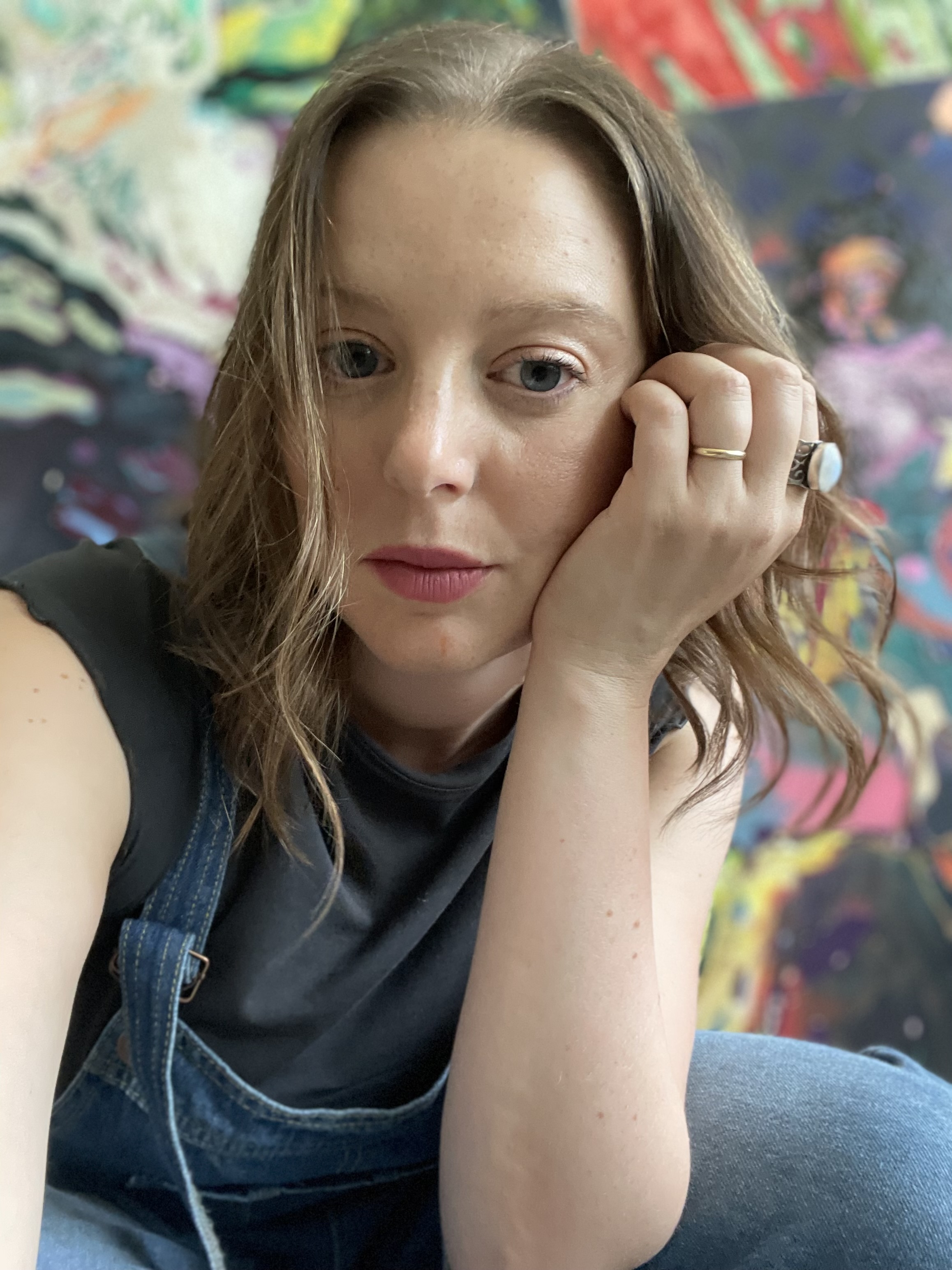 My practice is rooted in a fascination with the emotional and psychological resonance of colour. I am interested in how abstract language can create a form of interior mapping—how a palette, a texture, or a gesture can act as a conduit for feeling, memory, or tension. Colour holds strong cultural associations with mood or meaning, but what captivates me most are the moments where those associations unravel. Brightness does not always equate to joy; red can seduce, soothe, or confront depending on what it sits beside. In my work, I seek to unpick these assumptions and offer a space where contradiction is held and felt.
My practice is rooted in a fascination with the emotional and psychological resonance of colour. I am interested in how abstract language can create a form of interior mapping—how a palette, a texture, or a gesture can act as a conduit for feeling, memory, or tension. Colour holds strong cultural associations with mood or meaning, but what captivates me most are the moments where those associations unravel. Brightness does not always equate to joy; red can seduce, soothe, or confront depending on what it sits beside. In my work, I seek to unpick these assumptions and offer a space where contradiction is held and felt.Abstraction allows me to bypass the literal and engage with material and sensation in a more direct, embodied way. I work in layers of oil stick, oil pastel, and paint, favouring materials that encourage intuitive mark-making and physical interaction. The process is tactile and improvisational—sometimes call and response, sometimes more urgent or disruptive. I don’t plan my compositions in advance but allow the work to unfold in stages, often covering, scraping back, and revisiting sections over time. This layered process mirrors how emotion or memory functions: not linear or fixed, but sedimented, shifting, and reactivated.
Though my work is formally abstract, it is often driven by sensory or observational starting points—light through leaves, the heat of a summer sky, the colour of bruised skin, or the tension in an overheard phrase. I make a lot of drawings from life, but these are not preparatory studies so much as openings—ways into the work that are eventually discarded or absorbed. What remains is not a representation but a residue, a distillation of something once seen or felt.
I’m drawn to the idea of painting as a multi-sensory language—one that exceeds visuality to invoke something bodily or spatial. The surface becomes a field of relationships: between colour and line, absence and weight, softness and rupture. In many ways, my paintings are emotional landscapes, occupied by a tension between the intuitive and the formal, the personal and the universal.
My recent work has been influenced by a shift in perspective brought about by motherhood—a transformation of time, body, and space that has sharpened my sensitivity to cycles, thresholds, and the precarity of control. Though not explicitly autobiographical, this shift has deepened my engagement with themes of survival, care, and the quiet violence of everyday experience.
Ultimately, I see painting as an act of translation—of sensation into surface, of experience into mark. I want my work to hold space for uncertainty, to resist easy legibility, and to invite viewers into an encounter that is felt before it is understood.